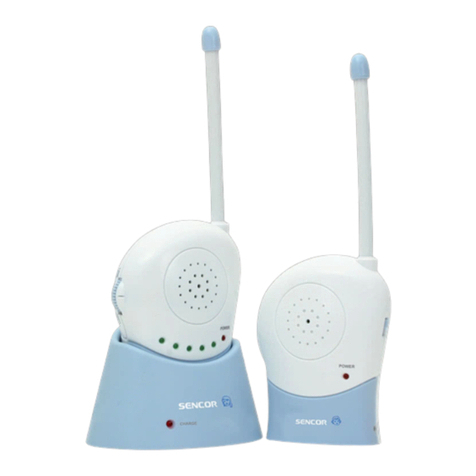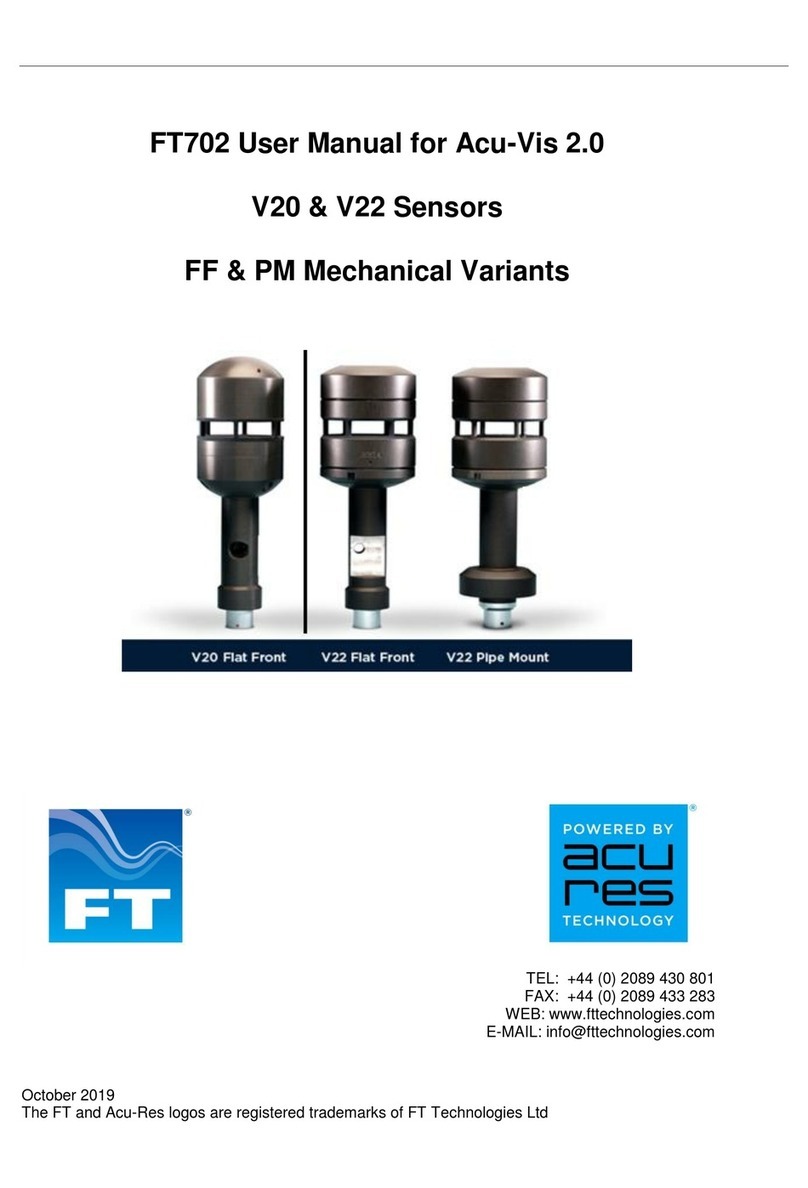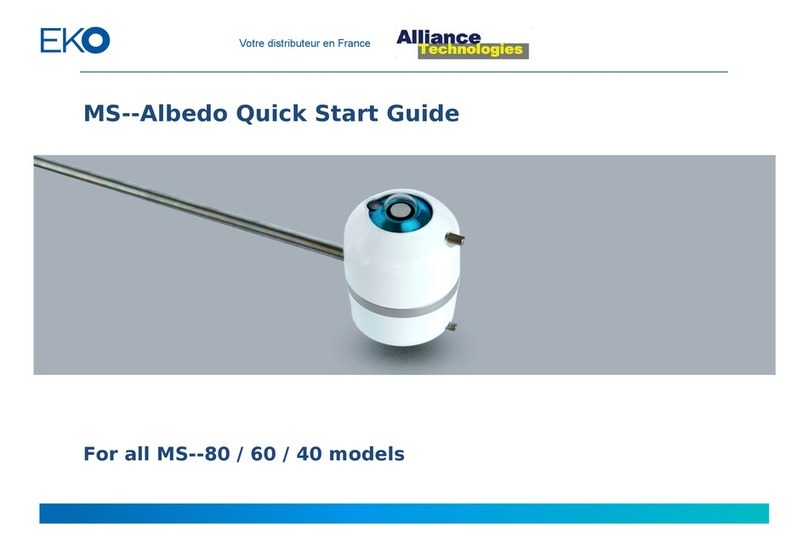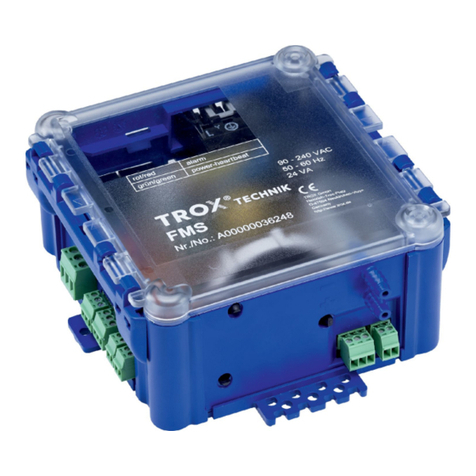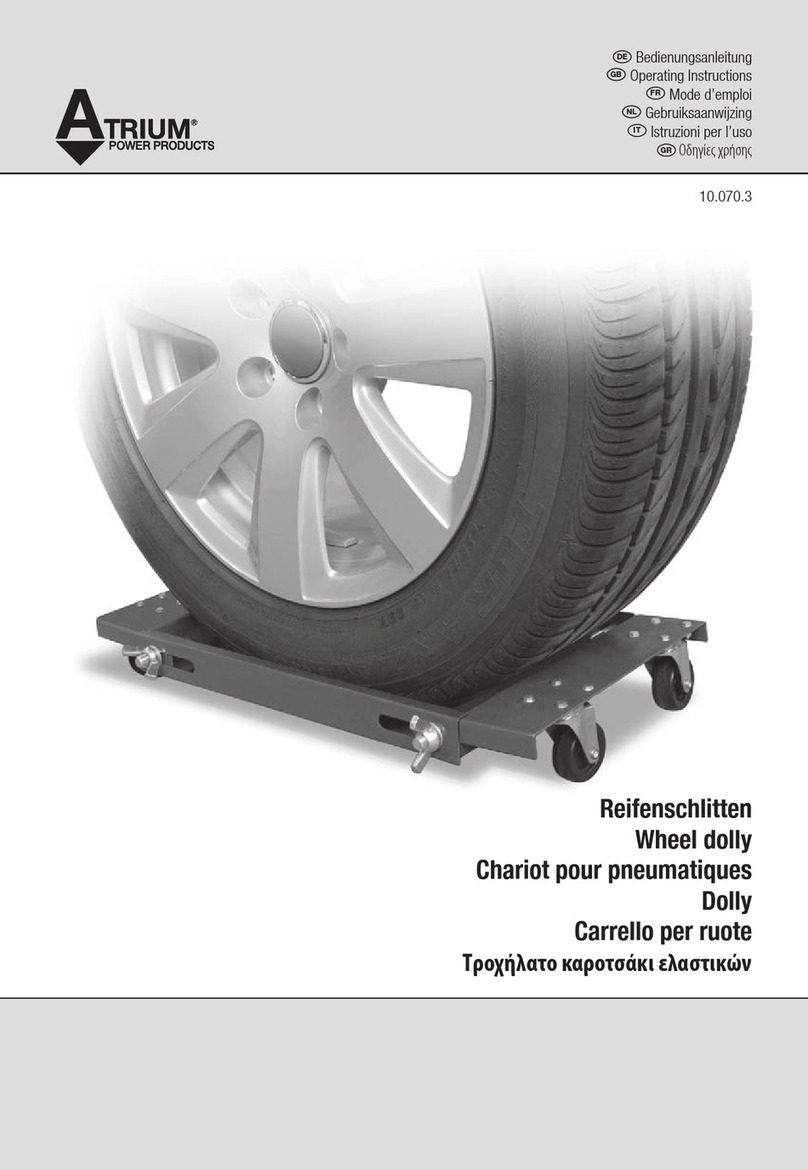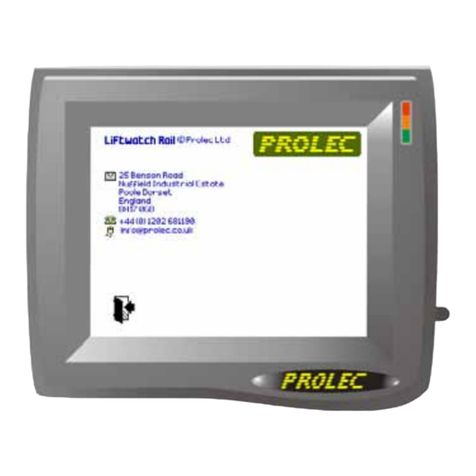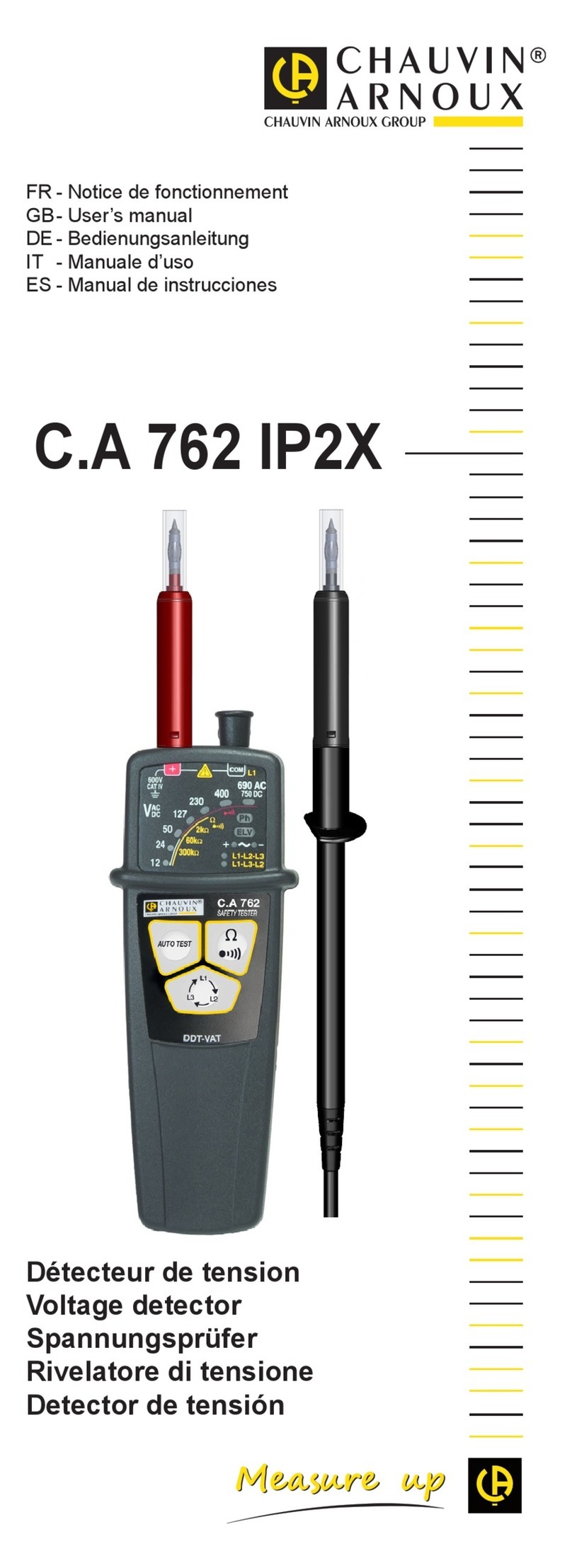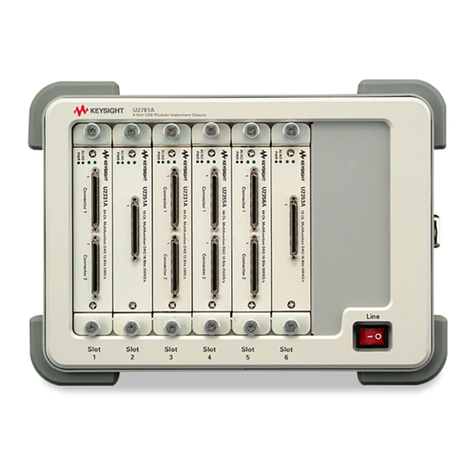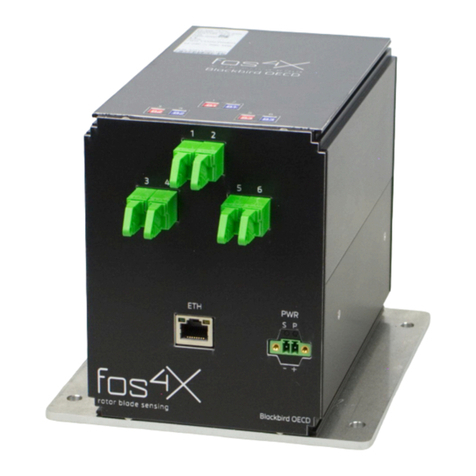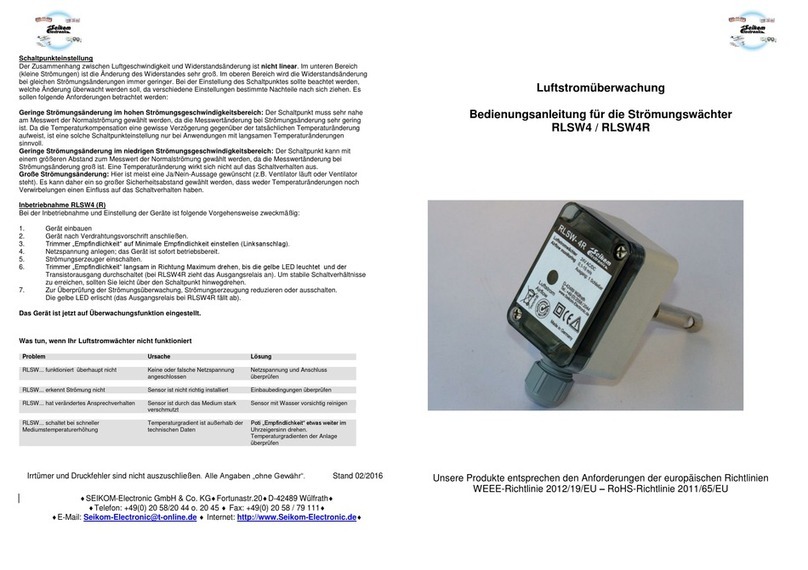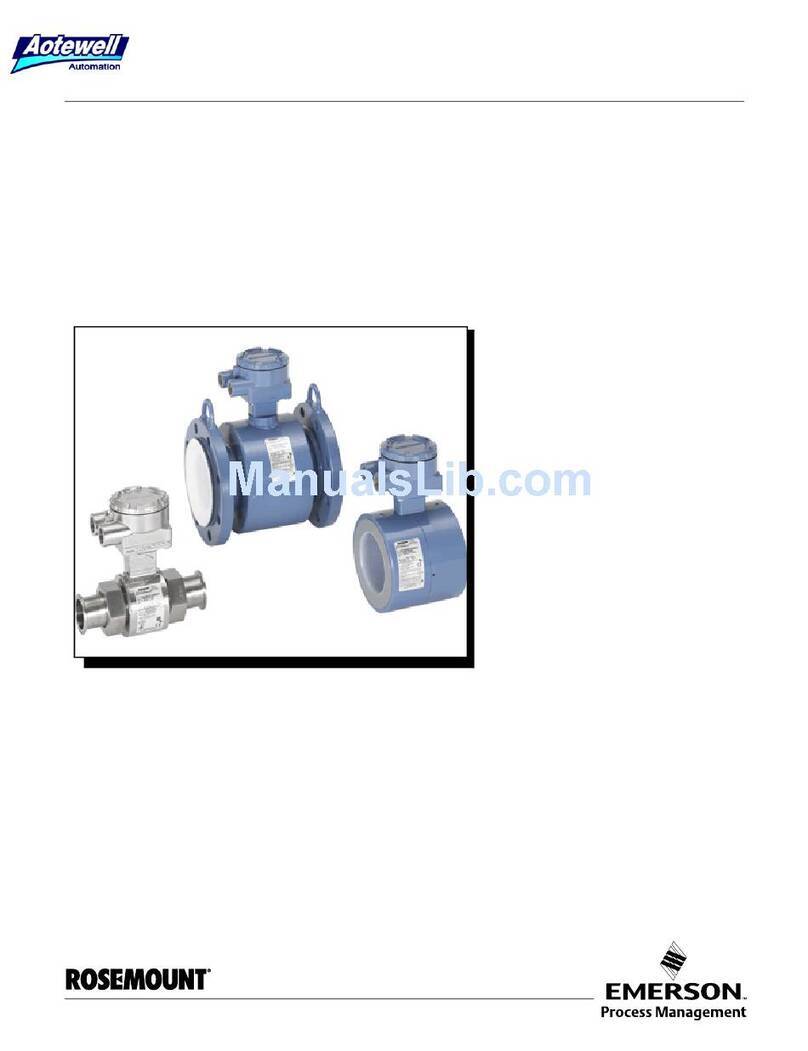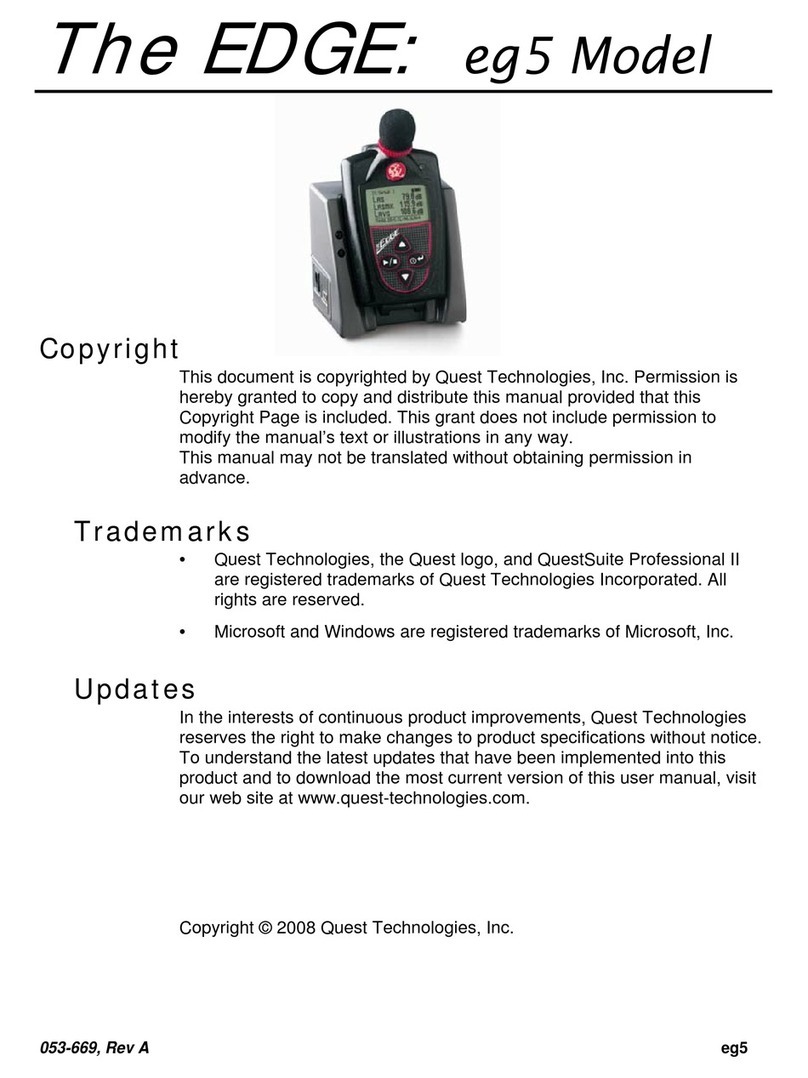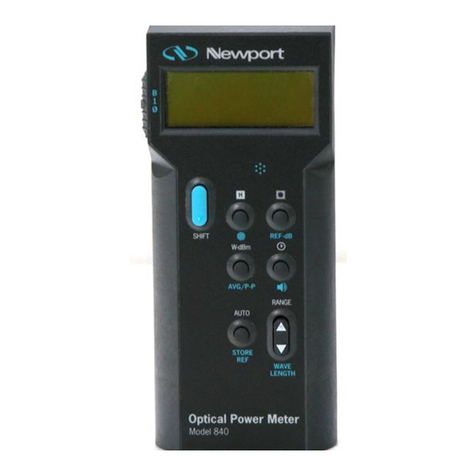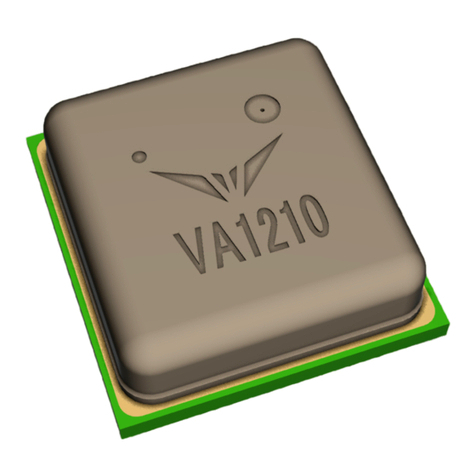Static Solutions OHM-STAT RT-1000 Instruction Manual

Information
Solutions Strategiesand Innovations
Static Solutions Inc.
Static Solutions Inc. - Ohm - Stat RT - 1000 Information
www.staticsolutions.com
OHM-STAT
®
RT-1000
OWNERS MANUAL & OPERATION GUIDE
RESISTIVITY, RESISTANCE, ELECTRICAL GROUND, RTT, RTG,
VOLUME RESISTANCE, TEMPERATURE, HUMIDITY METER.
WILL TEST MATERIALS, CHAIRS, SMOCKS FOR ELECTRICAL
PROPERTIES ACCORDING TO EOS 20/20 SPECIFICATIONS.
Note: This manual is in the process of being updated.
*This instrument is no longer supplied with an external power supply as they were rarely used.
*The majority of the referenced ANSI ESD Test Standards in this document have been updated.
*Please us ANSI ESD S20.20-2014 for the latest standards and TR-53 for the latest test methods
Click Here to Purchase this Item from an Authorized Distributor that provides one full year of
Tech support in using this device at no charge!
Static Solutions Inc.
331 Boston Post Road-East
Marlboro, Massachusetts 01752
Tel: 508.480.0700
Fax: 508.485.3353

Information
Solutions Strategiesand Innovations
Static Solutions Inc.
Static Solutions Inc. - Ohm - Stat RT - 1000 Information
www.staticsolutions.com
TABLE OF CONTENTS
Contents Page.
Cover
Table of contents
Test Procedures 1
Features- Operations - Surface Resistivity 2
Concentric ring- surface resistance 3
Surface to ground- calibration 4
Specifications 5
Warranty 6.
Questions and answers 7-10
CalibrationProcedure 11
ANSI/ESD S20.20-1999 12-29
ESD - STM 12.1 - 1997 30-38
ESD - S20.20 - 1995 39-51
RT 1000 Accessories 52-53

Information
Solutions Strategiesand Innovations
Static Solutions Inc.
Static Solutions Inc. - Ohm - Stat RT - 1000 Information
www.staticsolutions.com
1
Static Solutions Inc.
Ohm- Stat RT-1000
Digital Resistivity/Resistance/Temperature/Humidity Meter
Description:
The Ohm-Stat RT-1000 Resistance, resistivity ,temperature,
humidity Test kit is easy to operate, compact, lightweight,
portable meter designed to measure temperature, humidity and
electricalresistivity/resistance. Usingbothinternal and external
test probes, the meter will measure resistivity, resistance to
ground, resistance between two points according to EOS/ ESD
association standards- S4.1, S6.1, S7.1, S11.11 and European
standard CECC-EN 1000/15. With the accessory probes the
meter can test the electrical circuitry of the building, ESD
chairs, and smocks. Additional probes are available to measure
heel straps, wrist straps, and small parts using miniature probes,
and a concentric ring probe.
Test Procedures
Specific industries, which
require accurate
measurements, will dictate
the correct test procedures.
The procedure outlined in
the Product Test Bulletin is
specifically used in the
electronics industry where
the EOS/ESD and CECC
procedures predominate. It
is recommended that the
other industry procedures
may be more appropriate
for your industry. These
include UL, ASTM, ,
specifications such as MIL-
HDBK-263, EIA-1S-5-A,
ASTM D-257, and ASTM
F-150. Failure to measure
relative humidity and
temperature at the time of
testingis in non-compliance
with ANSI/ESD-S7.1. Figure 1
Ohm-Stat RT-1000
Megohmmeter
All materials must be tested on an insulated surface to avoid
misleading measurements. This is especially true with non-
homogeneous and multiplayer materials. It is possible to actually
measure down through the dissipative surface layer and then along
the inner conductive layer and back up through the dissipative
layer. This is why it is technically not correct to include a surface
resistivity layer measurement value for two layer materials. Always
measure material thickness when measuring electrical properties
because thickness, temperature, and relative humidity can and will
affect the resistance/resistivity readings.
StaticSolutions , Inc.
Ohm-StatRT-1000Megohmmeter
MeterTestKitContents:
1 Ohm-Stat RT-1000Resistance-Resistivity-
Humidity-Temperature Meter
1 Blow Molded, Foam Lined Travel Case
1Concentric Ring Probe. (Optional)
25 lb. 2.5 inch DiameterTest probes.
1ChairProbe
2Smock Probes
2 Coil cords. 6 foot Test Grounding Leads.
1 Grounding Cord and Clip
1 9-volt battery
1 Ground Test Adapter
1 Product Instruction Bulletin
1 AC PowerAdapter- positive center, 120-
volt input, and 9-12 volt 200 mA output.
Miniature, 220 volts adapter, hand and
floor probes are available as options.
As with all high quality test equipment
proper storage and correct use of the
Ohm-StatRT-1000isrequired.
CAUTION: Because the AC power
adapter will charge the battery,ONLYUSE
a rechargeable battery when operating
theAC adapter with the meter.

Information
Solutions Strategiesand Innovations
Static Solutions Inc.
Static Solutions Inc. - Ohm - Stat RT - 1000 Information
www.staticsolutions.com
2
A
Ohm-StatRT-1000 METER DESIGN FEATURES
A
Test Button- The round black button will turn on the power. When depressed
and held down with reasonable force the resistance/resistivity, humidity, and
temperature values are displayed on the screen for approximately 30 seconds.
HOLDTHEBUTTONDOWNUNTILTHEVALUESAREDISPLAYED.Atthe
completion of the test the power will turn off automatically.
B
Selector Switch- The switch selects the desired applied test voltage of either
10 or 100 volts.
10 volts should be used
between 1X 10
3
- 9.9 X 10
5
ohms.You can over ride the D
range by selecting the 10 or C
100 volt switch per EOS
standards.
100 volts should be used to H
measure between
1 X10
6
–1 X10
13
ohms per
EOS standards.
If the battery is too low to
give accurate readings the G
LCDwilldisplay“Low
Battery” B
If the resistivity is below 103
ohms/sq., the LCD will
Display “less than 1K”. F
If the reading is over 1012
Battery Compartment- This
F compartment houses a 9 volt battery
which must be installed prior to use.
Use a 9 volt alkaline battery for long
life. Do not use the alkaline battery if
the power battery is used. If the
power adapter is used a rechargeable
battery is recommended.
GParallel Test Probes- These
probes located on the bottom of the
meter are used to measure surface
resistiviy in ohms/sq. units. These
probes are made from a highly
conductive, low durometer elastomer.
Care should be taken to avoid harsh
solvents and extreme abrasion.
Occasional cleaning with a mild soap
and water solution will extend the life
of the probe feet. If damage does
occur, these probes are replaceable
for a nominal charge. The probes are
fabricated with an internal and
external brass rails.
HCase- The meter case is molded
from a high impact ABS polymer.
Simple cleaning with a mild soap and
watersolutionwillremovealldirtand
ohms/sq. the LCD will Figure 2 - Features of the Ohm - Stat RT 1000 debris.
display “more than 2 X 10 12 . Temperature - Humidity - Resistance Meter
If the reading is over 106ohms/sq. the LCD will display “change to
100 volt setting” if the setting is set on 10 volts. If the reading is
under 106ohms/sq. the LCD will display “change to 10 volts “if the
meter voltage switch is set on 100 volts.
C
External Test Jacks- The external 3.5 mm monaural jacks on the
top right of the meter are used to attach the two coil cords to the
2.5 inch-5 lb. probes These probes are used to test resistance
and RTT and RTG. When the 3.5 mm plugs are inserted into the
jacks the parallel resistivity probes on the bottom of the meter
are deactivated. Insert the banana plug end of the cords into the
5 lb, 2.5 inch probes.
D
AC PowerAdapter- This plug allows the meter to be used witha
center positive 9-12 volts 200 mA output power adapter. The
input may be either 110 volts or 220 voltsAC .
E
Ground Shield Jack- Because of the possibility of 60 cycles
electrical noise and possible interference caused by the two
external coil cords acting like antennae the straight wire ground
cord is supplied. This shield ground jack is located on the top
left on the meter. This interference occurs at the higher resistance
values 10 10-10 12ohms.
Operation:
Prior to testing, ensure that surfaces to be tested are
clean and free of contaminants.
Surface Resistivity:
Parallel Probe Resistivity Method
The parallel resistivity probe method, complies with
ASTM D-257. It is used to give fast electrical
resistivity measurements on flat homogeneous
materials. It may be used on multiplayer materials, but
this should be noted along with the temperature and
humidity values on the data report.
A. Place the meter on the desired surface
to be tested.
A.
Move switch to the desired test voltage position,
either 10 or 100 volts.
B.
Press and hold down the test power button until
the resistance/resistivity and temperature and
humidity values appears on the LCD screen. This
will occur in about 15-20 seconds as specified in
ANSI/ESD standards.
E

Information
Solutions Strategiesand Innovations
Static Solutions Inc.
3
Static Solutions Inc. - Ohm - Stat RT - 1000 Information
www.staticsolutions.com
ConcentricRingProbeResistivityMethod
(Optionaltestprobeaccessory)
Insert both coil cords using the monaural plugs into the 3.5
mm meterjackson thetoprightof theRT-1000 meter.Attach
the banana plug coil cord terminations into the concentric
ring probe. Place the probe onto the surface to be tested.
Press the test button and wait until the values appear in
approximately 15-20 seconds. The correct temperature,
humidity,andresistivitywillbedisplayedon theLCDscreen.
The resistivity value displayed MUST be multiplied by a
factor of 10 to achieve the correct test value. These values
will read in ohms/sq. e.g. 3.5 X10 4 ohms/sq. (displayed
value.) .The actual resistivity value will be 3.5 X 10 5 ohms/
sq.
SurfaceResistanceMeasurements(RTT)
ThisprocedurewhichcomplieswithEOS/ESD-S4.1measures
resistance between two points independent of a groundable
point. Procedures vary regarding sample preparation, probe
preparation, and spacing of the 5 pound probes.
A.
Connect the monaural plug ends of the test leads into
the 3.5 mm jacks of the meter. Connect the banana plug
ends of the test coil cords into the 5 pound, 2.5 inch
diameter probes.
B.
Place both probes on the material according to the ANSI
EOS/ESD test procedures.
C.
Select the correct test voltage position. Over 1 X 10 6
ohms use 100 volts. Under 1 X 10 6 ohms use 10 volts.
The meter will inform you on the LCD for incorrect
voltage positions.
A. Press and hold the test button until power is applied to
the meter and a resistance, humidity, temperature value
is displayed on the LCD screen. This may take 20-30
seconds. When the button is released the displayed value
willremainonthe screenautomatically for 20-30 seconds
with no battery drain. At high resistance values and to
minimize line current interference the use of the enclosed
shield ground cord is recommended.
Figure3 - Concentric Ring Probe
Figure 4 - Ohm - Stat RT-1000 Point to Point (RTT) test.

Static Solutions Inc. - Ohm - Stat RT - 1000 Information
www.staticsolutions.com
4
Information Solutions Strategies and Innovations
Static Solutions Inc.
Surface-To-GroundMeasurements(RTG)
This procedure measures the surface resistance between a ground point
on the material surface and specific positions on the material being tested.
This procedure complies with the EOS/ESD S4.1 test standard.
A.
Meter setup. With both test leads connected to the meter attach the
alligator clip to one banana plug and the other end to the 2.5 inch,
5 pound weight probe.
B.
Attach the alligator clip to a known electrical ground such as a ground
snap on the mat or the electrical ground of the building. Position the
probe on the surface to be tested in accordance with the desired test
procedure.
C.
Press the test button until the resistivity, humidity, and temperature
test values are displayed on the LCD screen. These readings will
conform to: EIA, EOS/ESD, ANSI, IEC-93, CECC, and ASTM test
procedures. When performing tests, especially with higher resistance
materials, be sure the test lead wires do not touch each other or overlap
and that your hands are not in contact with the probes or wires during
the actual touching of the materials. This will ensure accurate readings
and prevent interference cross talk.
Figure 5 Ohm Stat - RT 1000 Point to ground (RTG) test
CalibrationandMaintenance
The Ohm-Stat
RT-1000 requires no service or maintenance except
for an occasional cleaning of the rubber on the internal and external
test probes. A mild soap and water solution will remove dirt or other
harmful contaminants from both the rubber probes and the meter
case. Harsher solvents will affect the rubber probes and therefore
should not be used. When the meter is not used for an extended
period of time remove the battery and the coil cords to prevent
damage due to battery leakage and probe jack damage. Do not use a
alkaline 9 volt battery with the AC/DC power converter. If a power
converter is used a re-chargeable battery is recommended.
The Ohm-Stat RT-1000 is calibrated to NIST traceable standards at
the factory. The calibration is done by using NIST traceable 1%
resistors , hygrometer and thermometer.. This method assures many
years of long life and accurate readings. Attaching 1% resistors to
the probes will verify this accuracy.
Figure 6 Ohm Stat CB - 9900 Calibration box

Static Solutions Inc. - Ohm - Stat RT - 1000 Information
www.staticsolutions.com
5
Resistivity Test Ranges
1 X 10
3
–9 X 10
6
ohms @ 10 volts
1 X 10
6
–9 X 10
12
ohms @ 100 volts
Power-BatterySupply
A 9 volt battery is supplied. If a
rechargeable battery is used, the
recharging can be done inside
the meter.
The 12 volt power supply is
both a adapter and a recharging
device. With a 9 volt alkaline
battery the expected life is
approximately 30 hours or 5000
twenty second measurements.
Using an adapter not designed
for this meter may cause serious
damage negating the warranty
on the meter. Only a 110 volt
DC, center positive 200 mA
adapter is recommended.
A low battery indicator will
alert the user to replace a weak
battery.
If a weak battery is not replaced
the meter may continue to give
test readings, but these readings
should not be considered
accurate.
OperatingConditions:
320F-1000 F(00C-380 C)
Display:
Two inline, thirty two .20" characters are
alpha numeric. The LCD displays
all test results simultaneously.
MeterWeight:
10.2 oz. (289 mg.). Meter and battery
only.
12lbs.(5.476kg.) includingmeter,
adapter, probes, leads, and case.
Dimensions :
7.50inch( 19.05cm) L
4.00inch(10.16cm) W
1.5inch(3.81cm) H.
Probes:
Two 2.87 inch (7.2 cm)
long parallel, conductive
rubber re-placeable probes
on the bottom of the meter
case. They conform to
ASTM,ANSI,andCECC
standards.
Two 5 pound (2.27 kg.),
2.5 inch(6.4cm)diameter,
conductive Shore A 50-60
durometer external rubber
external probes-enclosed.
Two smock clip test
probes- are enclosed
One 8 inch X 12 inch
stainless steel probe to be
used to test chairs and
shoes are enclosed
One ground tester to
check on the electrical
ground is enclosed
OPTIONAL
ACCESSORIES.
One 5 pound concentric
ring probe conforming to
EOS/ESD,ANSIandCECC
standards.
One 2 inch diameter ,6
inch long, dual probe to be
used to test the electrical
resistance of shoes and
wrist strap readings.
One miniature resistance
probe.
CurrentLimit:
1milliampDCcurrent for 10 volts
0.1 milliampDCcurrentfor100volts.
Accuracy:
10
3
–10
8
ohms +/-10%
10
9
-
10
10
ohms +/-15%
10
11
- 10
12
ohms +/-25%
Zero:
Automatic zeroing.
PowerSwitch:
Momentary on, press button
Automatic zeroing
OperatingConditions:
32
0
F-100
0
F(0
0
-38
0
C)
Information Solutions Strategies and Innovations
Static Solutions Inc.

Static Solutions Inc. - Ohm - Stat RT - 1000 Information
www.staticsolutions.com
6
WarrantyExclusion:
Figure 8 Powered byAC (110 Volts or 220 Volts) or 9 volt battery
Theforegoingexpresswarrantyis madeinlieuof other product warrantiesexpressandimplied,includingmerchantability
andfitnessfor aparticularpurposewhicharespecificallyordirectly disclaimed.
Theexpresswarrantywillnotapplytodefectsordamageduetoneglectmisuse,accidents,altercations,operatorfailureto
properly maintain, followinstructions,orfailuretocleanor repair products.
LimitofWarranty:
In noeventwill Static Solutions, Inc. orseller be responsible orliable forspecial, incidental orconsequential losses or
damages,whetherbasedontort,contract,ortheuseorinabilitytousetheproduct.
Beforeusing, theproductusersshalldeterminethesuitabilityofthe productfor theirintended use. The users assume all
riskandliabilitywhatsoeverinconnection therewith.
Fulfillmentof StaticSolutions,Inc.’s warrantyobligationswillbe thecustomer’s exclusiveremedyandStaticSolutions,Inc.
andseller’s limitofliabilityfor anybreachofwarranty orotherwise.
Any questions regarding these procedures or other questions should be directed to our Engineering staff or customer
service representative by calling 508.480.0700. Static Solutions Inc. Static Solutions Inc. 331 Boston Post Road-East
Marlboro. MA. 01752.
Information Solutions Strategies and Innovations
Static Solutions Inc.

Information
Solutions Strategiesand Innovations
Static Solutions Inc.
Static Solutions Inc. - Ohm - Stat RT - 1000 Information
www.staticsolutions.com
7
RT-1000 Question and Answers
1. Why is it important to measure temperature and humidity ?
Answer- The humidity and temperature affect the electrical properties ofthe material being tested. The combination of low humidity
and low temperature will give the highest electrical resistance results or slowest dissipation times. At high humidity a thin layer of
water is condensed or absorbed on or in the material being tested. This is true of hydroscopic additives added to a material to
increase the electrical conductivity which is moisture absorbable. At elevated temperatures the mobility of free electrons is increased
thereby increasing the materials conductivity. This is especially true for carnon black , metallic oxides, metals, and other materials
added to a material which must be mobile or in close proximity. When the material is at a lower temperature built in stresses occur
which might increase the resistance due to increased distance between the conductive additives. Thus, humidity and temperature
must be known. It is possible to test or manufacture a material at high humidities and pass all the test specifications. But, when the
customer receives the material and uses it at a lower humidities, or temperature the material fails to pass the specifications.
Thus,causing rejects and loss of product. Another reason why one must measure and record this data is that ANSI/ESD Association
and European CECC recognizes the environmental affects and specifies in their standards that they measured and recorded.
For example bothESD S4.1 ESD Protective Worksurfaces section 6.2.4 and ESD S7.1-1994 Resistaive Characterization of Materials
Floor Materials sections 5.2.4 and 5.3.3 “Also report temperature and relative humidity at the time of testing”. ANSI/EOS/ESD-
S11.11-1993 Surface resistance measurement of Static Dissipative Planar Materials section 11.0 B. “report the conditioning period,
relative humidity, and temeperature.”
All parties must test and record the data using the same parameters in order to avoid problems. The manufacturer, distributor, sales
person, and customer must understand the environmental humidity and temperature parameters in order to not accept out of
specification materials or reject in specification materials. Both of these situations will cost money to rectify.
2. Why and when do you test at either 10 volts or 100 volts ?
Answer:
In previous years people desiring to measure resistivity or resistance had to follow either the ASTM- D 264, ASTM- 991,
or NFPA 56A or NFPA 99. In these procedures people had to test at either 500 or 1000 volts. This caused concern regarding safety
to the person doing the tests. People wanting a smaller low cost meter measured the surface at 9 volts. 9 volts WILL NOT give the
accuracy that you need to perform the tests. In addition a 9 volt meter does not conform to EOS and 20/20 specifications.. At 9 volts
it is impossible to achieve accuracy at values higher than 10 7ohms. These specifications require to measure both the humidity and
temperature. What resulted was confusion. Everybody was doing their own tests.Finally the ESD Association got together to
standardize the test procedures with all the organizations.
What was decided was at values higher than 10 6ohms/square one must test at a constant 100 volts. At values lower than
10
6
ohms/sq. one must use 10 volts. This is explained in ANSI/EOS/ESD standards -S4.1,S7.1 and S11.11
3. Why is an alpha-numeric superior than an analog or LED display ?
Answer: Have you ever tried to interpret a value on an analog scale at high values, especially if your age is over 50 years old and
need glasses. It is very difficult to see and read !! The problem with LED displays are that it is difficult to determine where you are
on a specific decade. The advantage of a digital alpha-numeric display is that you can observe and track trends of a material over
time and it is easy to read and interpret.
4. With the meter can you use rechargeable batteries ?
Answer: Yes, the adapter is both a converter and a in meter re-charger. It is recommended to use only a rechargeable battery with
the power supply and do not use the power supply when using a conventional alkaline battery. It might cause leakage .
5. Can you use the meter without the external probes ?
Answer: Yes. The meter can be used with the built in parallel probes attached at the bottom the meter. This resistivity reading is in
ohms/square. This is a fast and quick way to measure the surface resistivity. This is a good simulation of the ASTM D-257 test
method with the meter power switch activated at a force of 5 pounds of pressure onto the built in parallel probes. Always remove
the coil cords from the meter when not using the external probes or when you use the bottom parallel resistivity probes. Because
there is no such thing as surface resistivity of two layer materials one can do a quick test for immediate evaluations.

Information
Solutions Strategiesand Innovations
Static Solutions Inc.
Static Solutions Inc. - Ohm - Stat RT - 1000 Information
www.staticsolutions.com
8
6. When the button is released and the value continues to display will this wear down the battery ?
Answer: No. Once the button is released the display is saved by a capacitor on the screen for a short time. No additional
power is used.
7. Is the meter manufactured inAmerica, England or the Far East ?
Answer:The correct answer isAmerica. Pride, quality, and quick delivery.
8. If I take consecutive readings do I have to re-zero the meter.
Answer: No. The meter is auto zeroing. There is no need to rezero.
9. What is RTT, RTG, volume resistance, resistivity ,concentric ring and bottom of meter parallel resistivity probes.) ?
Answer: RTT is resistance between two points. The values are in ohms. The procedure must conform
to EOS specifications. The humidity and temperature must be recorded. RTG is resistance between
ground and one point. The ground can be the common point ground which is on the mat or another
common ground connected to the wrist straps. Resistance is a better way to determine if the product
will work in actual usage, by actually duplicating the dissipation of static electricity from the worker
or product to the earth ground. Resistance, either surface or volume is a better incoming quality
control test since most of the products being tested is two layers and resistivity does not relate to two
layer mat products. In a two layer mat material the path to ground goes from the surface down to the
conductive layer across then up through the dissipative layer.
Volume resistance tests through the material layers –from the top through the bottom layer.
Resistivity is measured in ohms/square. The test are is usually a small square. The parallel probes on
the bottom measures ohms/square. The concentric ring or guarded electrode does the same but it
avoids stray readings around the ends of the probes and measure inside the two rings. To calculate
the resistivity from resistance multiply the resistance measurements by 10. The conversion factor of
10 is derived from the geometry of the electrode assembly.
10. When is the concentric ring electrode used to measure the resistivity values.
Answer: Because there was a possibility of the applied voltage (either 10 or 100 volts) going
around the parallel probes and giving an incorrect answer a concentric ring probe was developed
and explained in EOS/ESD-S11.11-1993 part 6.1.2. When the concentric ring probe is used a
multiplying factor of 10 must be used. Thus, one takes the reading in ohms (resistance) and
multiply by 10 in order to derive the desired correct answer in ohms/square. (resistivity).
Resistivity is usually perfomed as a quick quality control measurement for smaller dimensions.
Special miniature probes are available for really small limited space dimensions..
11. When the battery gets low can I still use the meter ?
Answer: Yes. The meter will display “low battery” if the battery gets low in power. But even in this situation
the meter will still perform and will still display accurate results. The meter has incorporated a “cut-out” level
in which the meter will stop functioning completely when the power level gets too low to maintain a constant
10 or 100 volts output. Yes, there will be power left in the battery due to a regulator to maintain this correct
level.

Information
Solutions Strategiesand Innovations
Static Solutions Inc.
Static Solutions Inc. - Ohm - Stat RT - 1000 Information
www.staticsolutions.com
9
12. If I measure high resistance materials will the applied voltage drop below 100 volts ?
Answer: No ! We are using a voltage converter which maintains constant 100 or 10 volts voltage over the
complete
resistance range. The EOS 20/20 specification says when measuring under 10 6 ohms use 10 volts and when
you test materials over 10 6 ohms use 100 volts.
13. If I damage a parallel probe electrode can they be replaced ?
Answer: Yes. For a nominal charge they can be replaced. When cleaning use a soap and water solution.
14. Inorder to satisfycompaniesachievingISO-9000 certification are our meters NIST and CE marktraceable ?
Answer: The meters come with a NIST certificate when ordered. After one year the meters can be sent back to Static Solutions
for recalibration. The meters are CE mark tested.
15. I have to use the meter overseas . Can the meter be used with a 220-240 volts power supply ?
Answer:Yes. We supply a 120 volts adapter with the meter. In order to use 220 volts an easily purchased 12 volts DC 220 volt AC
adapter can be purchased and used with the meter. Static Solutions can supply this adapter at a nominal charge. Be sure to use a
100-150 milliampfemale2.5mm wide,5.5mmlonmgpositivecenterplug.Alsomakesurethewallplugwillfitintherecepticleofthe
country where the meter will be used. It might make sense to use 9 volts alkaline batteries overseas in order to avoid problems. Do
not use a power adapter when using a alkaline battery. It might leak or explode. When using a power adapter use a rechargeable
battery.
16. If the meter fails to work can it be fixed /?
Answer: Under one year the meter is fully warranted and will be fixed at no charge as long as the meter was not abused or
dropped. Contact the company at 508.480.0700 regarding a return authorization number after the warranty period expires.
17. Where can the meter be used ?
Answer: The meter can be used in all facets of material production including engineering, maintenance, quality
control, incoming inspection, manufacturing, research, or sales departments.
18. What industries can be the meter be used ?
Answer: Photographic , medical, cleanroom, electronics, automotive, pharmaceutical, research and coatings industries.
19. What products can be tested with this meter ?
Answer: Any and all materials that are electrically conductive , dissipative, or antistatic between 1000 ohms and 10 13 ohms.
Items include floor mats, table mats, conductive floor tiles, coatings, floor finishes, bags, containers, smocks, footwear, heel
grounders, wrist straps, and grounding straps.
20. What standards do this meter conform ?
Answer:Themetercantestto thefollowingstandards:EOS/ESD-S4.1,S11.11,S7.1,NFPA-99A,ANSI,UL,ASTM-D-257,
ASTM-F150, Military,EIA-541,andCECC(European)
21. I noticed when I brought the meter in from the cold car the temperature and humidity seemed to be incorrect. Why ?
Answer: It takes approximately ½ hour for the meter to climatize to different environmental conditions before taking a
measurement.Allow the meter to stabilize to ensure the correct reading.

Information
Solutions Strategiesand Innovations
Static Solutions Inc.
Static Solutions Inc. - Ohm - Stat RT - 1000 Information
www.staticsolutions.com
10
22. What precautions should I take to ensure correct readings especially at high resistances i.e. 10 11 ohms, 10 12 ohms.
Answer: Do not touch the coiled cords or external probes when taking a reading at high resistance values. In addition do not
have the cords touch each other . The teadings may be higher than the resistance of the wire or probe paint insulation.
23. What solutions should I use to clean the meter or probes ?
Answer: Use a mild detergent water solution. Stronger solvents will attack the meter case and or probe rubber.
24. Why do I need a ground cord ?
Answer: When you are in an electric field (60 cycles AC) or at a potential higher higher than ground it helps to bring the meter
and circuit board to the same potential as the grounded material which is tested. The two cords act like an aerial and will receive
this electrical magnetic and radio interference and cause errors in the measurement. Grounding will eliminate this interference.
25. The meter did not work when I removed the cords from the external probes and tried to measure resistivity. Why ?
Answer: You must remove the cords from the meter to activate the probes on the bottom of the meter. The cords must also be
removed from the meter case. Merely detaching the cords from the probes will not activate the bottom parallel probes. Do not keep
the coil cords in the meter when not using the external probes. Occasionally due to stress the jack will not return to the original
position and the internal probes will not work and a code 20 or other error message will be displayed.
26. The external black rubber probes have tendency to mark white surfaces. What can I do to clean the surfaces
especially in clean rooms.
Answer: Place the probes on the surface and not move them while testing. If the meters are going into as clean room cleaning
off the surface after usage with alcohol is suggested.
27. I was carrying the case and it opened. Why?
Answer: There are two safety locks on the case which must be fully latched in order to prevent premature opening during
travel. Always check the case before carrying it offsite.
28. Can I charge the meter with the power supply?
Answer: Yes and no. You can charge the battery in the case only if you use a rechargeable battery. You CANNOT use an
alkaline battery with the AC adapter. It might cause problems and negates the warranty.
29. Can I use the meter to test chairs, and smocks?
Answer: First read the EOS specifications 12.1 and 2.1 . This will explain the procedures. You must use the correct probes
which are available from Static Solutions and are enclosed in the RT-1000 case.
30. What other accessories are available?
Answer: Probes to measure miniature or small size parts, probes to measure shoes, probes to measure wrist straps, and probes to
measure resistivity by the concentric ring procedure. We also enclose a probe to test whether the electrical ground is accurate.
A calibration boxis also available. This CB-9000 is available from an authorized distributor of Static Solutions. The meter can
be sent back to Static Solutions in order to be calibrated and issued a NIST certificate.
Any questions regarding these procedures or other questions should be directed to our Engineering staff or customer service
representative by calling 508.480.0700. Static Solutions Inc.331 Boston Post Road-East Marlboro. MA. 01752.

Ohm-Stat™ RT-1000
CALIBRATION INSTRUCTIONS
1. Purchase 1%- 103-1012 ohm value resistors, high accuracy relative humidity
hygrometer, and a high accuracy thermometer. The resistors, hygrometer, and
thermometer must be NIST calibrated with a certificate of traceability.
2. Open meter being careful not to disturb or break the two wires connecting the
power button to the circuit board.
3 Observe on the right lower side of the meter printed circuit board three (3)
calibration pots.
4. ALLOW THE METER TO EQUILIBRATE AND NORMALIZE IN THE
ENVIRONMENT FOR 2 HOURS BEFORE TESTING.
5. Using the supplied coil cords attach the alligator clips to the banana plug ends of
the cords.
6. Insert the 3.5mm ends into the meter jacks.
7. Attach the ends of the resistors to the ends of the alligator clips.
8. The top one is for humidity. The middle one is for resistivity. The bottom one is
for temperature. Adjustment is done with a small screwdriver. Clockwise is to
increase the value, counter clockwise is to decrease the value.
9. Press the power button and compare the resistor value, humidity, and
temperature to the parameter to be calibrated.
10. Release the power button and slowly turn the correct adjustment pot.
11. Re-press the power button, and observe the LCD screen.
12. Re-press and adjust the pot if necessary.
13. Close case and tighten the 4 screws.
14. Press the power button to verify that the meter is working.
15. Record serial number and attach a NIST calibration certificate.
16. Record in data base for one year.
There is a conformal coating applied to the circuit board after calibration in order
to prevent inaccurate readings due to high humidity. Turning the adjustment screw
might be difficult. It will not hurt the meter.
***Should calibration traceable to the NIST be required, please call Static Solutions
Inc. directly to arrange for calibration.
For additional information please contact:
United Static Control Products
Email: [email protected]
Prepared and written on: January 5, 2007 by Lenard Cohen

Information
Solutions Strategiesand Innovations
Static Solutions Inc.
Static Solutions Inc. - Ohm - Stat RT - 1000 Information
www.staticsolutions.com
12
ANSI/ESD S20.20-1999
for the Development of an
Electrostatic Discharge Control
Program for –
Protection of Electrical and Electronic
Parts, Assemblies and Equipment
(Excluding Electrically Initiated
Explosive Devices)
Electrostatic Discharge Association
7900 Turin Road, Bldg 3, Ste 2
Rome, NY 13440-2069
An American National Standard
Approved August 4, 1999

Information
Solutions Strategiesand Innovations
Static Solutions Inc.
Static Solutions Inc. - Ohm - Stat RT - 1000 Information
www.staticsolutions.com
13
ANSI/ESD-S20.20-1999
ESD Association Standardfor the Development of an
Electrostatic Discharge Control
Program for–
Protection of Electrical and Electronic
Parts, Assemblies and Equipment
(Excluding Electrically Initiated
Explosive Devices)
Approved May 16, 1999

Information
Solutions Strategiesand Innovations
Static Solutions Inc.
Static Solutions Inc. - Ohm - Stat RT - 1000 Information
www.staticsolutions.com
14
Caution
Notice
ESD Association standards and publications are designed to serve the
public interest by eliminating misunderstandings between manufacturers
and purchasers, facilitating the interchangeability and improvement of
products and assisting the purchaser in selecting and obtaining the
proper product for his particular needs. The existence of such standards
and publications shall not in any respect preclude any member or non-
member of the Association from manufacturing or selling products not
conforming to such standards and publications. Nor shall the fact that a
standard or publication is published by the Association preclude its
voluntary use by non-members of the Association whether the document
is to be used either domestically or internationally. Recommended
standards and publications are adopted by the ESD Association in
accordance with the ANSI Patent policy.
Interpretation of ESD Association Standards: The interpretation of
standards in-so-far as it may relate to a specific product or manufacturer
is a proper matter for the individual company concern and cannot be
undertaken by any person acting for the ESD Association. The ESD
Association Standards Chairman may make comments limited to an
explanation or clarification of the technical language or provisions in a
standard, but not related to its application to specific products and
manufacturers. No other person is authorized to comment on behalf of
the ESD Association on any ESD Association Standard.
Published by:
Electrostatic Discharge Association
7900 Turin Road, Building 3, Suite 2
Rome, NY 13440-2069
Copyright © 1999 by ESD Association
All rights reserved
No part of this publication may be reproduced in any form, in
an electronic retrieval system or otherwise, without the prior
written permission of the publisher.
Printed in the United States of America
ISBN: 1-58537-006-1

Information
Solutions Strategiesand Innovations
Static Solutions Inc.
Static Solutions Inc. - Ohm - Stat RT - 1000 Information
www.staticsolutions.com
15
Foreword
(This
foreword
is
not
part
of
ANSI/ESD
Association
Standard
S20-1.29099)
This standard covers the requirements necessary to design, establish, implement, and maintain an
Electrostatic Discharge (ESD) Control Program for activities that: manufacture, process, assemble, install,
package, label, service, test, inspect or otherwise handle electrical or electronic parts, assemblies and
equipment susceptible to damage by electrostatic discharges greater than or equal to 100 volts Human
Body Model (HBM). When handling devices susceptible to less than 100 volts HBM, more stringent ESD
Control Program Technical Requirements may be required, including adjustment of program Technical
Element Recommended Ranges. This document covers the control program requirements and offers
guidance to protect and handle ESD sensitive (ESDS) items, based on the historical experience of both
military and commercial organizations. References include, ESD Association, US Military and ANSI
approved standards for material properties and test methods. The fundamental ESD control principles
that form the basis of this document follow:
A. All conductors in the environment, including personnel, must be bonded or electrically
connected and attached to a known ground or contrived ground (as on shipboard or on
aircraft). This attachment creates an equipotential balance between all items and personnel.
Electrostatic protection can be maintained at a potential above a “zero” voltage ground
potential as long as all items in the system are at the same potential.
B. Necessary non-conductors in the environment cannot lose their electrostatic charge by
attachment to ground. Ionization systems provide neutralization of charges on these
necessary non-conductive items (circuit board materials and some device packages are
examples of necessary non-conductors). Assessment of the ESD hazard created by
electrostatic charges on the necessary non-conductors in the work place is required to ensure
that appropriate actions are implemented, commensurate with risk.
C. Transportation of ESDS items outside an Electrostatic Protected Area (hereafter referred
to as “Protected Area”) requires enclosure in static protective materials, although the type of
material depends on the situation and destination. Inside a Protected Area, low charging and
static dissipative materials may provide adequate protection. Outside a Protected Area, low
charging and static discharge shielding materials are recommended. While these materials
are not discussed in the document, it is important to recognize the differences in their
application.
Any relative motion and physical separation of materials or flow of solids, liquids, or particle-laden gases
can generate electrostatic charges. Common sources of ESD include personnel, items made from
common polymeric materials, and processing equipment. ESD can damage parts by direct contact with a
charged source or by electric fields emanating from charged objects that induce a charge on grounded or
capacitively coupled to ground sensitive items. It is possible to determine device and item susceptibility
by exposure to simulated electronic equivalent discharge circuits. The level of sensitivity determined by
test using these models may not necessarily relate to the level of sensitivity in a real life situation.
However, they are used to establish a baseline of susceptibility data for comparison of devices with
equivalent part numbers from different manufacturers. Three different models are used for
characterization of electronic components - Human Body Model (HBM), Machine Model (MM), and
Charged Device Model (CDM). It is important to recognize that these models, if used alone, are difficult to
apply in terms of specification setting activities. Examples of ESDS parts are microcircuits, discrete
semiconductors, thick and thin film resistors, hybrid devices and piezoelectric crystals.

Information
Solutions Strategiesand Innovations
Static Solutions Inc.
Static Solutions Inc. - Ohm - Stat RT - 1000 Information
www.staticsolutions.com
16
Beneficial comments (recommendations, additions, deletions) and any pertinent data which may be of
use in improving this document should be addressed to:
ESD Association
7900 Turin Road, Bldg 3, Ste 2
Rome, NY 13440-2069
Committee Members:
Steve Gerken, Co-Chairman
USAF Dave Leeson, Co-Chairman
Motorola SSG David E. Swenson
3M
Anthony Klinowski
Boeing Garry McGuire
NASA (Hernandez Engineering) Ronald J. Gibson
Celestica International
Thomas Mohler,
Raytheon Systems Corporation
Additional Contributing Individuals:
Ronald L. Johnson
Intel Robert Parr
Consultant Joel Weidendorf
Consultant
Donald E. Cross
USN Sheryl Zayic
Boeing Robert Cummings
NASA
Jeffrey Scanlon
ASC John T. Kinnear Jr.
IBM Ralph Myers
ASC
ii

Information
Solutions Strategiesand Innovations
Static Solutions Inc.
Static Solutions Inc. - Ohm - Stat RT - 1000 Information
www.staticsolutions.com
17
Table of Contents
1. PURPOSE.................................................................................................................................................1
2. SCOPE .................................................................................................................................................... 1.
3. REFERENCED PUBLICATIONS.............................................................................................................1
4. DEFINITIONS ............................................................................................................................................2
5. PERSONNEL SAFETY............................................................................................................................ 2.
6. ESD CONTROL PROGRAM................................................................................................................... 2.
6.0.1. ESD Control Program Requirements..............................................................................................2
6.0.2. ESD Control Program Guidance.....................................................................................................3
6.0.3. Tailoring...........................................................................................................................................3
6.1. ESD CONTROL PROGRAM ADMINISTRATIVE REQUIREMENTS.......................................................3
6.1.1. ESD Control Program Plan .............................................................................................................3
6.1.1.1. ESD Control Program Plan Requirement.................................................................................................3
6.1.1.2. ESD Control Program Plan Guidance ......................................................................................................3
6.1.2. Training Plan ...................................................................................................................................3
6.1.2.1. Training Plan Requirement.......................................................................................................................3
6.1.2.2. Training Plan Guidance............................................................................................................................3
6.1.3. Compliance Verification Plan..........................................................................................................3
6.1.3.1. Compliance Verification Plan Requirement..............................................................................................3
6.1.3.2. Compliance Verification Plan Guidance ...................................................................................................4
6.2. ESD CONTROL PROGRAM PLAN TECHNICAL REQUIREMENTS ......................................................4
6.2.1. Grounding / Bonding Systems ........................................................................................................4
6.2.1.1. Grounding / Bonding Systems Requirements...........................................................................................4
6.2.1.2. Grounding / Bonding Systems Guidance..................................................................................................4
6.2.2. Personnel Grounding ......................................................................................................................4
6.2.2.1. Personnel Grounding Requirements ........................................................................................................4
6.2.2.2. Personnel Grounding Guidance ...............................................................................................................4
6.2.3. Protected Areas...............................................................................................................................4
6.2.3.1. Protected Areas Requirement..................................................................................................................4
6.2.3.2. Protected Areas Guidance .......................................................................................................................5
6.2.4. Packaging........................................................................................................................................5
6.2.4.1. Packaging Requirements .........................................................................................................................5
6.2.4.2. Packaging Guidance ................................................................................................................................5
6.2.5. Marking............................................................................................................................................6
6.2.5.1. ESDS Assemblies and Equipment ...........................................................................................................5
6.2.5.2. Packaging.................................................................................................................................................5
6.2.6. Equipment .......................................................................................................................................5
6.2.6.1. AC Powered Tools ...................................................................................................................................5
6.2.6.2. Battery Powered and Pneumatic Hand Tools...........................................................................................6
6.2.6.3. Automated Handlers.................................................................................................................................6
6.2.7. Handling ..........................................................................................................................................6
6.2.7.1. Handling Procedure Requirements ..........................................................................................................6
6.2.7.2. Handling Procedure Guidance .................................................................................................................6
7. APPENDIX A- SENSITIVITY TESTING......................................................................................9..
7.1. ESD SENSITIVITY TESTING..................................................................................................................................................9
7.1.1. Human Body Model Sensitivity: ......................................................................................................9
7.1.2. Machine Model Sensitivity:..............................................................................................................9
7.1.3. Charged Device Model Sensitivity: .................................................................................................9
7.2. ASSEMBLY, EQUIPMENT AND DESIGN HARDENING ........................................................................................................10
7.2.1. Assembly, Equipment and Design Hardening Guidance:............................................................ 10
7.2.2. Direct Contact, Non-Operating Assembly, Body/Finger or Hand/Metal Tests:............................ 10
7.2.3. Direct Contact Operating Equipment Hand/Metal Test:............................................................... 10
7.2.4. Indirect Contact, Operating Equipment Furniture Model Test:..................................................... 10

Information
Solutions Strategiesand Innovations
Static Solutions Inc.
Static Solutions Inc. - Ohm - Stat RT - 1000 Information
www.staticsolutions.com
18
8. APPENDIX B- RELATED DOCUMENTS..............................................................................................1.1
8.1. MILITARY/U.S. GOVERNMENT............................................................................................................................................11
8.2. INDUSTRY STANDARDS.........................................................................................................................................................11
Table of Tables
TABLE 1 ESD CONTROL PROGRAM TECHNICAL REQUIREMENTS SUMMARY .......................................................................7
TABLE 2 ESD SUSCEPTIBILITY TEST REFERENCES FOR DEVICES.........................................................................................9
TABLE 3 ESD SUSCEPTIBILITY TEST REFERENCES FOR ASSEMBLIES AND EQUIPMENT..................................................10
